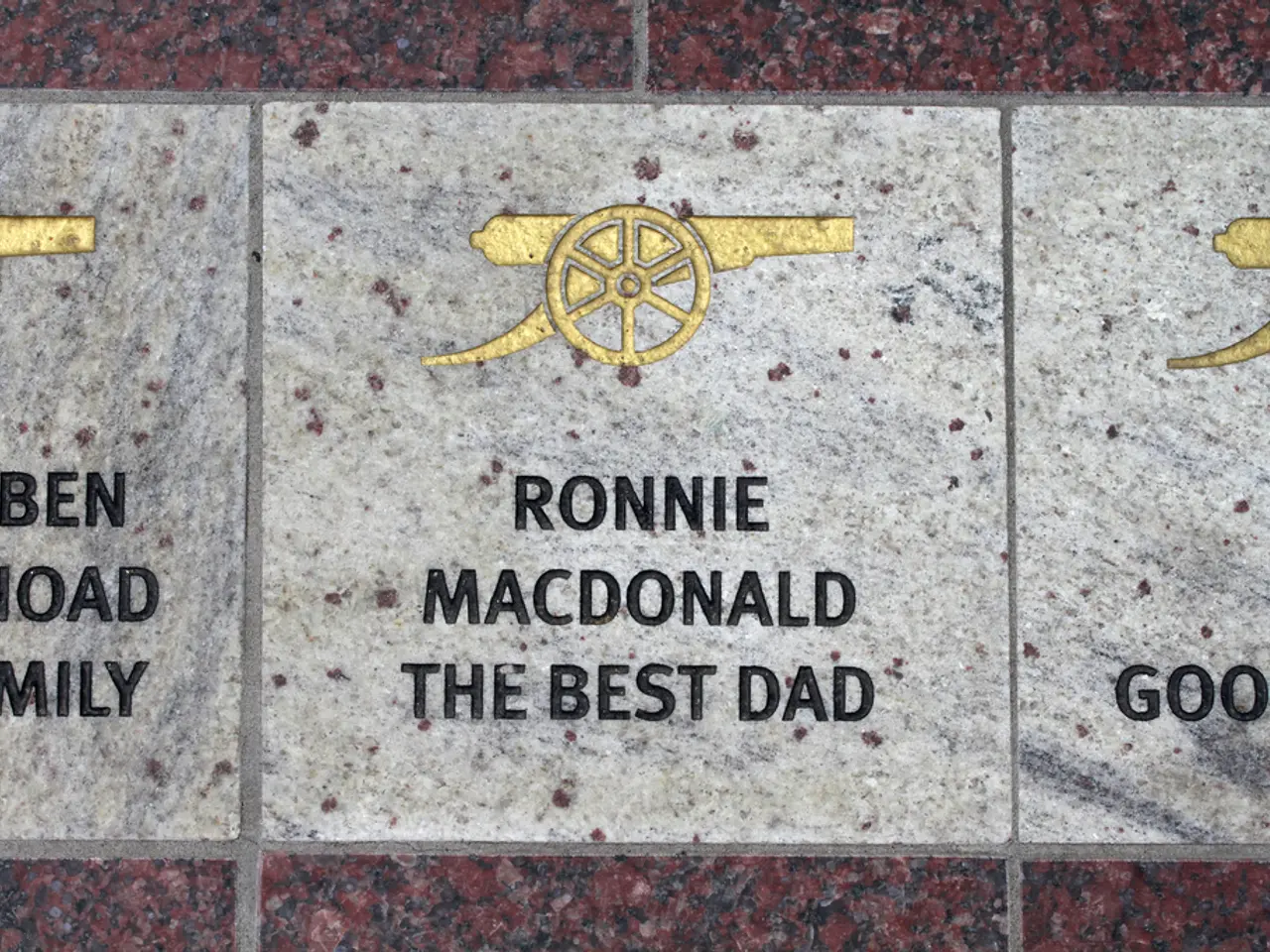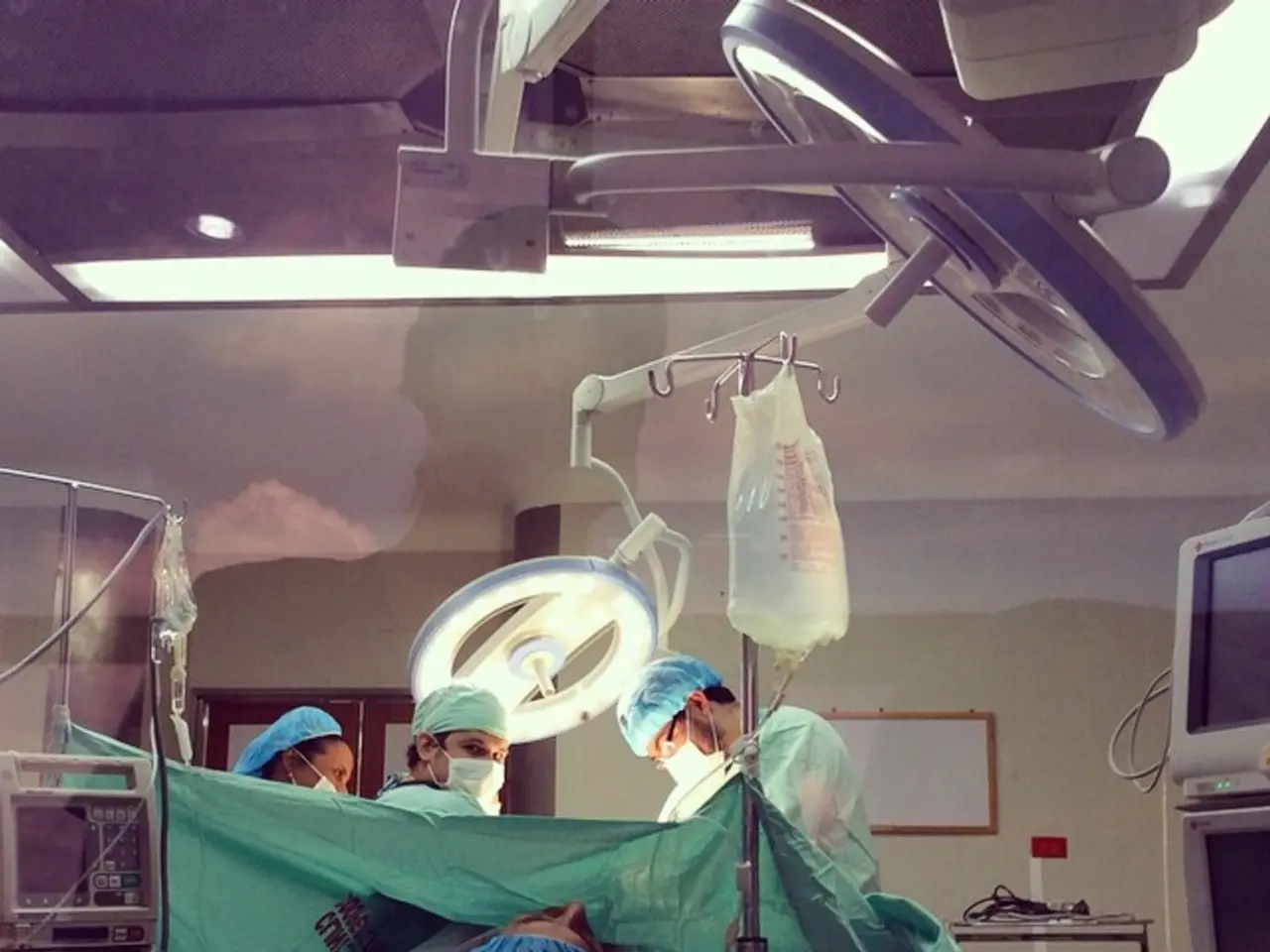Plastic surgery of the chin: Descriptions, methods, and healing process
In the realm of cosmetic surgery, two common procedures for enhancing the chin are sliding genioplasty and implant augmentation. Both methods offer distinct advantages and potential risks, each with its unique recovery profile.
**Sliding Genioplasty** is a bone modification technique that involves surgically cutting and sliding the chin bone forward or backward to reshape the chin. This procedure provides precise control over the chin's projection and contour.
On the other hand, **Implant Augmentation** involves placing a synthetic implant (commonly silicone or polytetrafluoroethylene) over the chin bone through small incisions, usually intraoral (inside the mouth), to augment the chin shape and projection.
Both procedures share some surgical risks, although specifics can vary. Infection and implant rejection are risks particularly relevant to implant augmentation. Implant displacement or asymmetry can occur with implants, possibly necessitating secondary adjustment. Nerve damage leading to numbness or pain is a risk for both surgeries since nerves around the chin area can be affected. Poor incision healing or scarring can occur but is usually minimal, especially with intraoral incisions. Sliding genioplasty risks include issues related to bone healing and potential asymmetry if the bone does not heal as planned.
Recovery typically takes 2 to 6 weeks, varying by individual and procedure extent. Initial swelling, bruising, and discomfort peak during the first week but gradually improve. Patients often resume light daily activities and work within about 7 to 10 days after implant augmentation or combined procedures, though residual swelling can last longer. Full recovery with resolution of swelling and final contour can take up to several months. Chin augmentation surgery itself usually lasts about 30-60 minutes, providing relatively quick surgical time.
In cases where rhinoplasty is combined with chin implant surgery, recovery overlaps, with swelling around the nose and chin areas simultaneously, extending downtime slightly but allowing a single recovery period rather than two separate ones.
A summary table provides a clear comparison of the two procedures:
| Aspect | Sliding Genioplasty | Implant Augmentation | |----------------------|-----------------------------------|---------------------------------| | Method | Bone cut and repositioned | Synthetic implant inserted | | Risks | Bone healing issues, nerve injury | Infection, implant rejection, displacement, nerve injury | | Surgery Time | Typically under 1 hour | Around 30-60 minutes | | Recovery Time | 2-6 weeks | 2-6 weeks | | Common side effects | Swelling, bruising, discomfort | Swelling, bruising, discomfort |
Both are effective for improving chin aesthetics, and the choice depends on patient anatomy, desired results, and surgeon expertise. Proper consultation and postoperative care are crucial for minimizing risks and ensuring optimal recovery.
It's worth noting that dermal fillers leave no scarring and have shorter recovery times than sliding genioplasty and implant surgeries. Dermal filler injections are a temporary nonsurgical alternative to chin implants. Aftercare for surgical implants is similar to that of sliding genioplasty procedures.
In conclusion, chin augmentation offers significant benefits for people who are dissatisfied with their chin, contributing to overall facial harmony. Prospective patients should carefully consider their options, discuss their goals with a licensed surgeon, and make informed decisions based on their unique needs and circumstances.
- The surgical procedures of sliding genioplasty and implant augmentation are commonly used in cosmetic surgery for enhancing the chin, each with unique advantages and potential risks.
- The science of health-and-wellness, fitness-and-exercise, skin-care, and nutrition plays a crucial role in ensuring a successful recovery from these surgeries and minimizing risks.
- Dermal fillers, a temporary nonsurgical alternative to chin implants, offer shorter recovery times and leave no scarring compared to surgical procedures like sliding genioplasty and implant augmentation.
- Proper consultation with a licensed surgeon and adherence to aftercare treatments are essential for a safe and effective chin augmentation surgery, leading to overall facial harmony.




